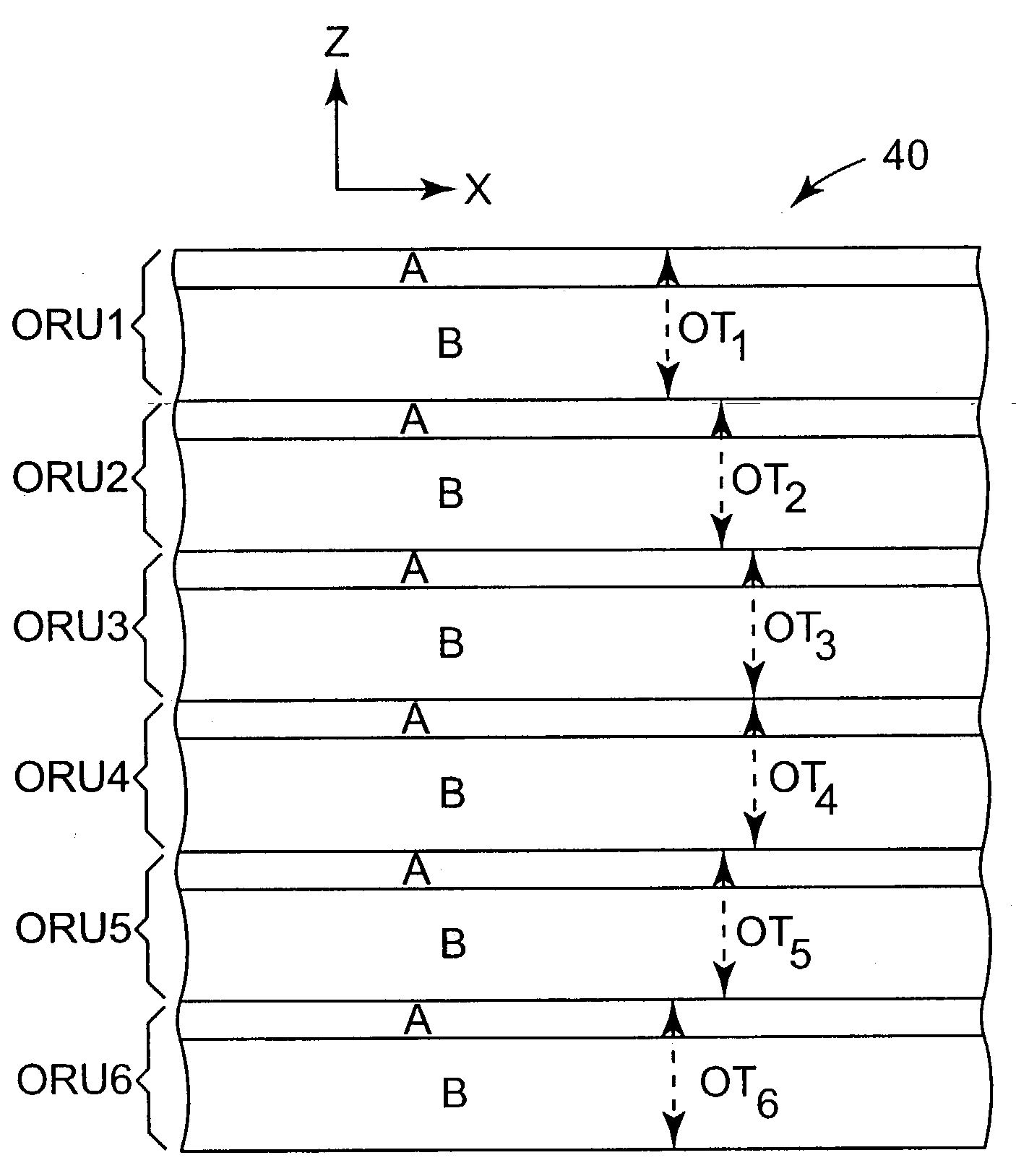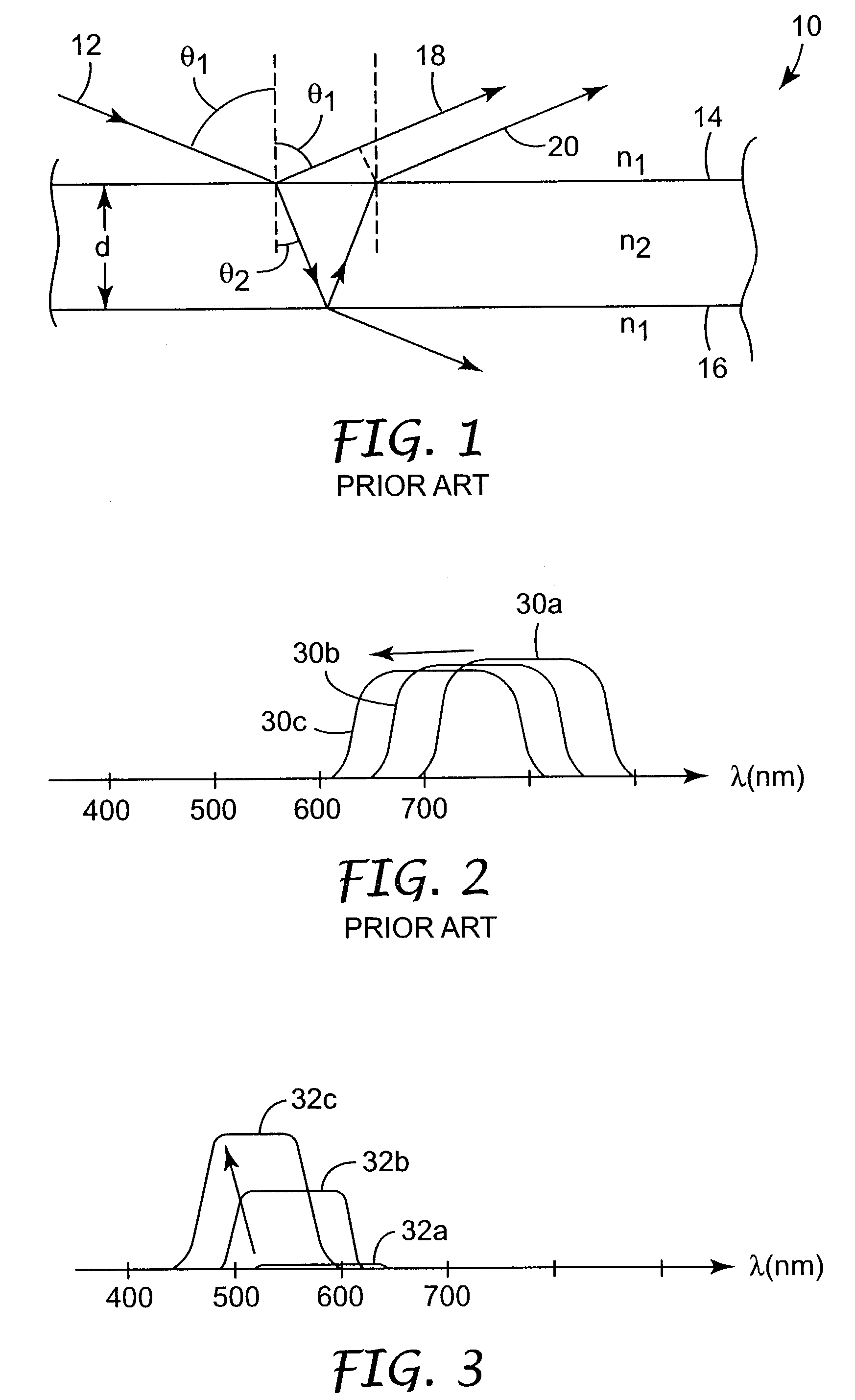Optical polarizing films with designed color shifts
a technology of optical polarizing films and color shifts, applied in the field of optical films, can solve the problem of substantially no reflection bands, and achieve the effect of increasing the incidence angl
- Summary
- Abstract
- Description
- Claims
- Application Information
AI Technical Summary
Benefits of technology
Problems solved by technology
Method used
Image
Examples
example
[0040]An example film will now be described. The polymer used in the isotropic layers of the film construction was specially formulated to achieve the necessary rheological, chemical, thermal, and optical properties. The polymers used in the film were chosen and / or developed according to the following conditions: they should be coextrudable; they should have adequate interlayer adhesion; and the isotropic polymer should have an unusually high refractive index in order to match the in-plane refractive indices of the birefringent polymer after stretching, and a low enough glass transition temperature so that it remains isotropic when oriented under conditions necessary to cause birefringence in the other polymer material. Preferably, the film is maintained at a temperature of at least about 20° C. above the glass transition temperature of the isotropic material during stretching.
Polymer 1—co-PEN-HNLT
[0041]A copolyester was synthesized in a batch reactor with the following raw material...
PUM
| Property | Measurement | Unit |
|---|---|---|
| refractive index | aaaaa | aaaaa |
| reflectivity | aaaaa | aaaaa |
| refractive indices | aaaaa | aaaaa |
Abstract
Description
Claims
Application Information
 Login to View More
Login to View More - R&D
- Intellectual Property
- Life Sciences
- Materials
- Tech Scout
- Unparalleled Data Quality
- Higher Quality Content
- 60% Fewer Hallucinations
Browse by: Latest US Patents, China's latest patents, Technical Efficacy Thesaurus, Application Domain, Technology Topic, Popular Technical Reports.
© 2025 PatSnap. All rights reserved.Legal|Privacy policy|Modern Slavery Act Transparency Statement|Sitemap|About US| Contact US: help@patsnap.com



